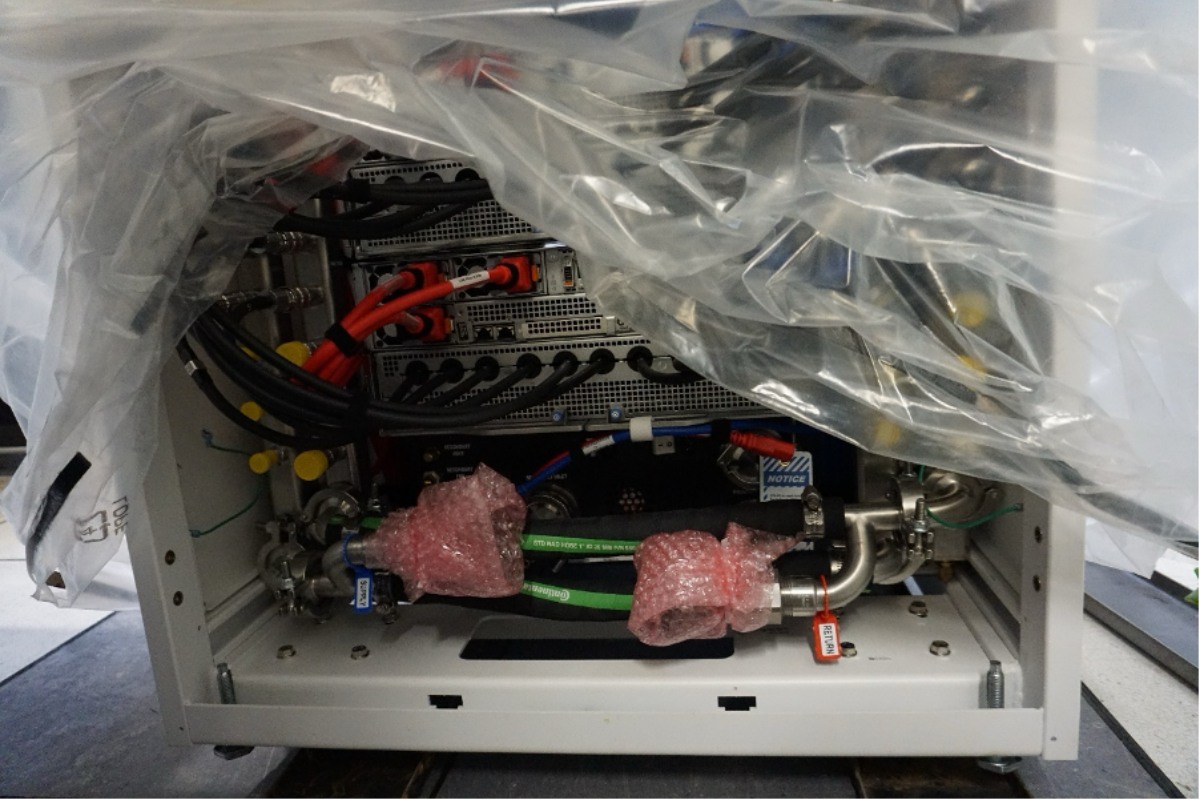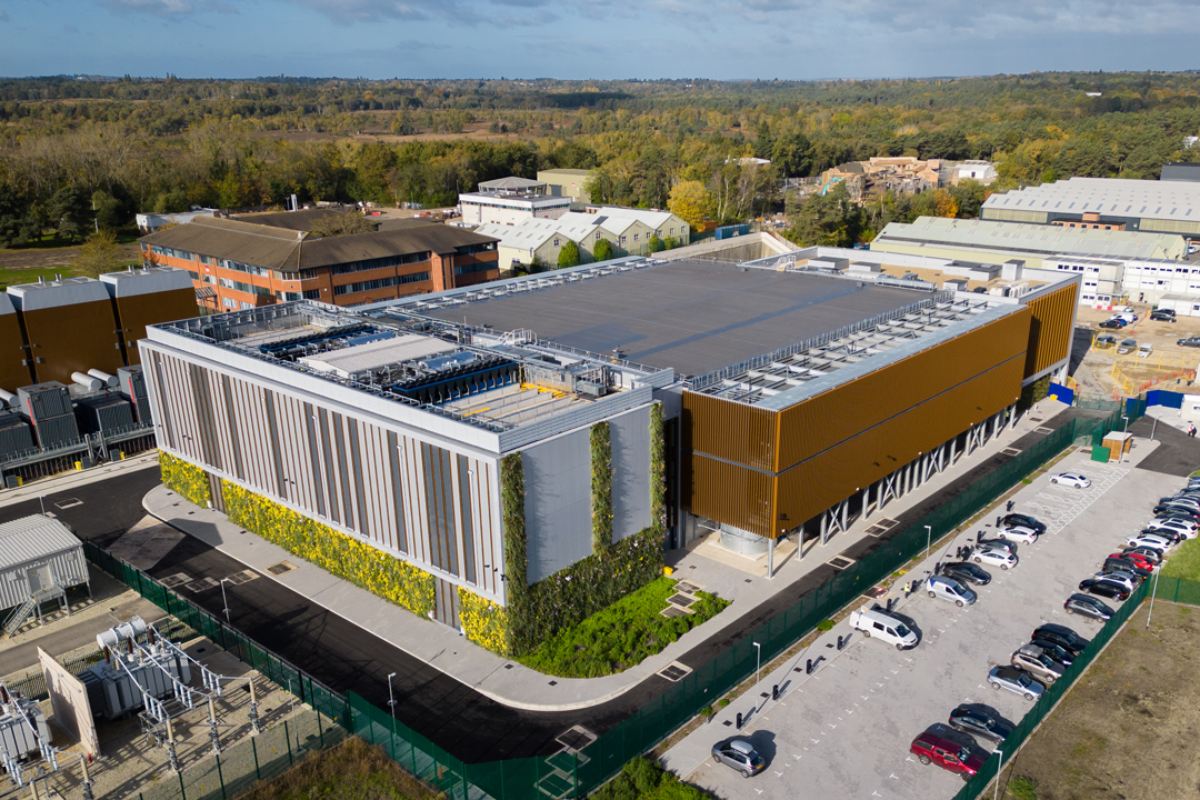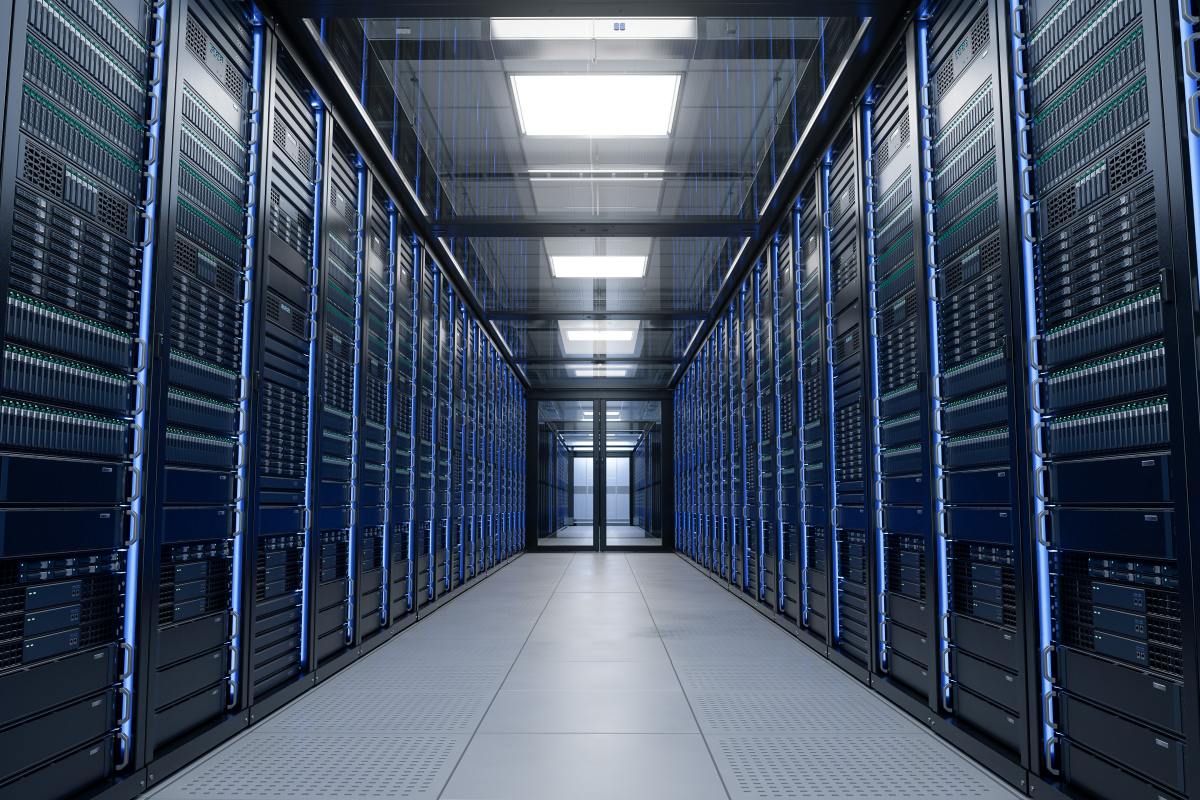Data Centre Infrastructure News & Trends
Commercial Real Estate: Property Developments, Trends & Infrastructure
Data Centre Business News and Industry Trends
Data Centre Infrastructure News & Trends
Enterprise Network Infrastructure: Design, Performance & Security
1547 announces the McAllen Internet Exchange (MCT-IX)
fifteenfortyseven Critical Systems Realty (1547), a developer and operator of interconnected data centres and carrier hotels across North America, has announced the launch of the McAllen Internet Exchange, known as MCT-IX, located within the Chase Tower in McAllen, Texas.
Chase Tower has long operated as a carrier hotel and a key aggregation point for cross-border network traffic between the United States and Mexico. The introduction of an internet exchange within the building provides a local platform for traffic exchange in a facility already used by multiple network operators.
MCT-IX has been formally registered with ARIN and is now accepting initial participants, with several networks already committing ports.
Interest in the exchange follows continued growth in network activity within Chase Tower. During 2025, the site has seen additional carrier deployments, capacity expansions by existing network operators, and increased demand for cross-connects.
The building’s owner has invested more than $6 million (£4.4 million) in infrastructure upgrades, covering backup power, lifts, fire and life safety systems, and HVAC improvements.
Capacity expansion and interconnection investment
1547 has also expanded interconnection infrastructure within the building, including the development of a new meet-me room and a dedicated carrier room.
The additional space is designed to support growing cross-connect demand and to provide direct access between networks, the new internet exchange, and other tenants within the facility.
Further capacity expansion is underway to support both existing data centre tenants and future MCT-IX participants; this includes an additional 500 kW of colocation capacity within Chase Tower, alongside a separate 3MW, 13,000ft² data centre annex. Both projects are scheduled for completion in Q4 2026.
J. Todd Raymond, CEO and Managing Director of 1547, says, “Announcing MCT-IX is an important milestone for both 1547 and the McAllen market.
"With formal ARIN recognition and early port commitments already underway, it is clear there is strong demand for an internet exchange that builds on the long-established interconnection ecosystem inside Chase Tower.
"As owners of the carrier hotel, we are committed to supporting this next phase of growth.”
The exchange is expected to reduce reliance on upstream routing that currently sends cross-border traffic outside the region before reaching its destination, giving networks a more local option for traffic exchange.
John Bonczek, Chief Revenue Officer of 1547, adds, “Across Chase Tower, we are seeing measurable increases in interconnection activity, from new deployments to expanded capacity and growing interest in route diversity.
"MCT-IX aligns with the needs of the ecosystem inside the building and complements our planned expansion.”
1547 says it will provide further updates as the exchange progresses through its launch phases and participation increases.
For more from 1547, click here.
Joe Peck - 17 December 2025
Data Centre Infrastructure News & Trends
Innovations in Data Center Power and Cooling Solutions
Liquid Cooling Technologies Driving Data Centre Efficiency
Ireland’s first liquid-cooled AI supercomputer
CloudCIX, an Irish provider of open-source cloud computing platforms and data centre services, and AlloComp, an Irish provider of AI infrastructure and sustainable computing solutions, have announced the deployment of Ireland’s first liquid-cooled NVIDIA HGX-based supercomputer at CloudCIX’s facility in Cork, marking a development in the country’s AI and high performance computing (HPC) infrastructure.
Delivered recently and scheduled to go live in the coming weeks, the system is based on NVIDIA’s Blackwell architecture and supplied through Dell Technologies. It represents an upgrade to the Boole Supercomputer and is among the first liquid-cooled installations of this class in Europe.
The upgraded system is intended to support industry users, startups, applied research teams, and academic spin-outs that require high performance, sovereign compute capacity within Ireland.
Installation and infrastructure requirements
The system stands more than 2.5 metres tall and weighs close to one tonne, requiring structural modifications during installation. Costellos Engineering carried out the building works and precision placement, including the creation of a new access point to accommodate the liquid-cooled rack.
Jerry Sweeney, Managing Director of CloudCIX, says, “More and more Irish companies are working with AI models that demand extreme performance and tight control over data. This upgrade gives industry, startups, and applied researchers a world-class compute platform here in Ireland, close to their teams, their systems, and their customers.”
The project was led by AlloComp, CloudCIX’s AI infrastructure partner, which supported system selection, supply coordination, and technical deployment.
AlloComp co-founder Niall Smith comments, “[The] Boole Supercomputer upgrade represents a major step forward in what’s possible with AI, but it also marks a fundamental shift in the infrastructure required to power it.
"Traditional data centres average roughly 8 kW per rack; today’s advanced AI systems are already at [an] unprecedented 120 kW per rack, and the next generation is forecast to reach 600 kW. Liquid cooling is no longer optional; it is the only way to deliver the density, efficiency, and performance for demanding AI workloads.”
Kasia Zabinska, co-founder of AlloComp, adds, “Supporting CloudCIX in delivering Ireland’s first liquid-cooled system of this type is an important milestone. The result is a high-density platform designed to give Irish teams the performance, control, and sustainability they need to develop and deploy AI.”
The system is expected to support larger model training, advanced simulation, and other compute-intensive workloads across sectors including medtech, pharmaceuticals, manufacturing, robotics, and computer vision.
CloudCIX says it will begin onboarding customers as part of its sovereign AI infrastructure offering in the near term.
To mark the deployment, CloudCIX and AlloComp plan to host a national event in January 2026, focused on supercomputing and next-generation AI infrastructure. The event will bring together industry, research, and policy stakeholders to discuss the role of sovereign and energy-efficient compute in Ireland’s AI development.
Joe Peck - 16 December 2025
Data Centre Infrastructure News & Trends
Innovations in Data Center Power and Cooling Solutions
Liquid Cooling Technologies Driving Data Centre Efficiency
Products
Motivair by Schneider Electric introduces new CDUs
Motivair, a US provider of liquid cooling solutions for data centres and AI computing, owned by Schneider Electric, has introduced a new range of coolant distribution units (CDUs) designed to address the increasing thermal requirements of high performance computing and AI workloads.
The new units are designed for installation in utility corridors rather than within the white space, reflecting changes in how liquid cooling infrastructure is being deployed in modern data centres.
According to the company, this approach is intended to provide operators with greater flexibility when integrating cooling systems into different facility layouts.
The CDUs will be available globally, with manufacturing scheduled to increase from early 2026.
Motivair states that the range supports a broader set of operating conditions, allowing data centre operators to use a wider range of chilled water temperatures when planning and operating liquid cooled environments.
The additions expand the company’s existing liquid cooling portfolio, which includes floor-mounted and in-rack units for use across hyperscale, colocation, edge, and retrofit sites.
Cooling design flexibility for AI infrastructure
Motivair says the new CDUs reflect changes in infrastructure design as compute densities increase and AI workloads become more prevalent.
The company notes that operators are increasingly placing CDUs outside traditional IT spaces to improve layout flexibility and maintenance access, as having multiple CDU deployment options allows cooling approaches to be aligned more closely with specific data centre designs and workload requirements.
The company highlights space efficiency, broader operating ranges, easier access for maintenance, and closer integration with chiller plant infrastructure as key considerations for operators planning liquid cooling systems.
Andrew Bradner, Senior Vice President, Cooling Business at Schneider Electric, says, “When it comes to data centre liquid cooling, flexibility is the key with customers demanding a more diverse and larger portfolio of end-to-end solutions.
"Our new CDUs allow customers to match deployment strategies to a wider range of accelerated computing applications while leveraging decades of specialised cooling experience to ensure optimal performance, reliability, and future-readiness.”
The launch marks the first new product range from Motivair since Schneider Electric acquired the company in February 2025.
Rich Whitmore, CEO of Motivair, comments, “Motivair is a trusted partner for advanced liquid cooling solutions and our new range of technologies enables data centre operators to navigate the AI era with confidence.
"Together with Schneider Electric, our goal is to deliver next-generation cooling solutions that adapt to any HPC, AI, or advanced data centre deployment to deliver seamless scalability, performance, and reliability when it matters most.”
For more from Schneider Electric, click here.
Joe Peck - 15 December 2025
Data Centre Infrastructure News & Trends
Innovations in Data Center Power and Cooling Solutions
News
ABB, Ark deploy medium voltage UPS in UK
ABB, a multinational corporation specialising in industrial automation and electrification products, has completed what it describes as the UK’s first deployment of a medium voltage uninterruptible power supply (UPS) system at Ark Data Centres’ Surrey campus.
The installation, with a capacity of 25MVA, is intended to support rising demand for high-density AI computing and large-scale digital workloads.
Ark Data Centres is among the early adopters of ABB’s medium voltage power architecture, which combines grid connection and UPS at the same voltage level to accommodate the growing electrical requirements of AI hardware. The project was delivered in partnership with ABB and JCA.
The installation forms part of Ark’s ongoing expansion, including electrical capacity for next-generation GPUs used in AI training and inference.
These systems support high-throughput computing across sectors such as research, healthcare, finance, media, and entertainment, and require stable, scalable power infrastructure.
Medium voltage architecture for AI workloads
Andy Garvin, Chief Operating Officer at Ark Data Centres, comments, “AI is accelerating data centre growth and intensifying the pressure to deliver capacity that is efficient, resilient, and sustainable. With ABB, we’ve delivered a first-of-its-kind solution that positions Ark to meet these challenges while supporting the UK’s digital future.”
Stephen Gibbs, UK Distribution Solutions Marketing and Sales Director at ABB Electrification, adds, “We’re helping data centres design from day one for emerging AI workloads. Our medium voltage UPS technology is AI-ready and a critical step in meeting the power demands of future high-density racks. Delivered as a single solution, we are supporting today’s latest technology and futureproofing for tomorrow’s megawatt-powered servers.
"ABB’s new medium voltage data centre architecture integrates HiPerGuard, the industry’s first solid-state medium voltage UPS, with its UniGear MV switchgear and Zenon ZEE600 control system into a single, end-to-end system. This approach eliminates interface risks and streamlines coordination across design, installation, and commissioning.”
Steve Hill, Divisional Contracts Director at JCA, says, “Delivering a project of this scale brings challenges. Having one partner responsible for the switchgear, UPS, and controls reduced complexity and helped keep the programme on track.
"Working alongside ABB, we were able to coordinate the installation and commissioning effectively so that Ark could benefit from the new system without delays or risks.”
The system reportedly provides up to 25MVA of conditioned power, achieving 98% efficiency under heavy load and freeing floor space for AI computing equipment. Stabilising power at medium voltage should also reduce generator intervention and energy losses.
For more from ABB, click here.
Joe Peck - 12 December 2025
Data Centre Infrastructure News & Trends
Enclosures, Cabinets & Racks for Data Centre Efficiency
Liquid Cooling Technologies Driving Data Centre Efficiency
Products
Supermicro launches liquid-cooled NVIDIA HGX B300 systems
Supermicro, a provider of application-optimised IT systems, has announced the expansion of its NVIDIA Blackwell architecture portfolio with new 4U and 2-OU liquid-cooled NVIDIA HGX B300 systems, now available for high-volume shipment.
The systems form part of Supermicro's Data Centre Building Block approach, delivering GPU density and power efficiency for hyperscale data centres and AI factory deployments.
Charles Liang, President and CEO of Supermicro, says, "With AI infrastructure demand accelerating globally, our new liquid-cooled NVIDIA HGX B300 systems deliver the performance density and energy efficiency that hyperscalers and AI factories need today.
"We're now offering the industry's most compact NVIDIA HGX B300 options - achieving up to 144 GPUs in a single rack - whilst reducing power consumption and cooling costs through our proven direct liquid-cooling technology."
System specifications and architecture
The 2-OU liquid-cooled NVIDIA HGX B300 system, built to the 21-inch OCP Open Rack V3 specification, enables up to 144 GPUs per rack. The rack-scale design features blind-mate manifold connections, modular GPU and CPU tray architecture, and component liquid cooling.
The system supports eight NVIDIA Blackwell Ultra GPUs at up to 1,100 watts thermal design power each. A single ORV3 rack supports up to 18 nodes with 144 GPUs total, scaling with NVIDIA Quantum-X800 InfiniBand switches and Supermicro's 1.8-megawatt in-row coolant distribution units.
The 4U Front I/O HGX B300 Liquid-Cooled System offers the same compute performance in a traditional 19-inch EIA rack form factor for large-scale AI factory deployments. The 4U system uses Supermicro's DLC-2 technology to capture up to 98% of heat generated by the system through liquid cooling.
Supermicro NVIDIA HGX B300 systems feature 2.1 terabytes of HBM3e GPU memory per system. Both the 2-OU and 4U platforms deliver performance gains at cluster level by doubling compute fabric network throughput up to 800 gigabits per second via integrated NVIDIA ConnectX-8 SuperNICs when used with NVIDIA Quantum-X800 InfiniBand or NVIDIA Spectrum-4 Ethernet.
With the DLC-2 technology stack, data centres can reportedly achieve up to 40% power savings, reduce water consumption through 45°C warm water operation, and eliminate chilled water and compressors.
Supermicro says it delivers the new systems as fully validated, tested racks before shipment.
The systems expand Supermicro's portfolio of NVIDIA Blackwell platforms, including the NVIDIA GB300 NVL72, NVIDIA HGX B200, and NVIDIA RTX PRO 6000 Blackwell Server Edition. Each system is also NVIDIA-certified.
For more from Supermicro, click here.
Joe Peck - 10 December 2025
Data Centre Infrastructure News & Trends
Innovations in Data Center Power and Cooling Solutions
Liquid Cooling Technologies Driving Data Centre Efficiency
Siemens, nVent develop reference design for AI DCs
German multinational technology company Siemens and nVent, a US manufacturer of electrical connection and protection systems, are collaborating on a liquid cooling and power reference architecture intended for hyperscale AI environments.
The design aims to support operators facing rising power densities, more demanding compute loads, and the need for modular infrastructure that maintains uptime and operational resilience.
The joint reference architecture is being developed for 100MW-scale AI data centres using liquid-cooled infrastructure such as the NVIDIA DGX SuperPOD with GB200 systems.
It combines Siemens’ electrical and automation technology with NVIDIA’s reference design framework and nVent’s liquid cooling capabilities. The companies state that the architecture is structured to be compatible with Tier III design requirements.
Reference model for power and cooling integration
“We have decades of expertise supporting customers’ next-generation computing infrastructure needs,” says Sara Zawoyski, President of Systems Protection at nVent. “This collaboration with Siemens underscores that commitment.
"The joint reference architecture will help data centre managers deploy our cutting-edge cooling infrastructure to support the AI buildout.”
Ciaran Flanagan, Global Head of Data Center Solutions at Siemens, adds, “This reference architecture accelerates time-to-compute and maximises tokens-per-watt, which is the measure of AI output per unit of energy.
“It’s a blueprint for scale: modular, fault-tolerant, and energy-efficient. Together with nVent and our broader ecosystem of partners, we’re connecting the dots across the value chain to drive innovation, interoperability, and sustainability, helping operators build future-ready data centres that unlock AI’s full potential.”
Reference architectures are increasingly used by data centre operators to support rapid deployment and consistent interface standards. They are particularly relevant as facilities adapt to higher rack-level densities and more intensive computing requirements.
Siemens says it contributes its experience in industrial electrical systems and automation, ranging from medium- and low-voltage distribution to energy management software.
nVent adds that it brings expertise in liquid cooling, working with chip manufacturers, original equipment makers, and hyperscale operators.
For more from Siemens, click here.
Joe Peck - 9 December 2025
Data Centre Infrastructure News & Trends
Enterprise Network Infrastructure: Design, Performance & Security
News
Products
tde expands tML breakout module for 800GbE ethernet
trans data elektronik (tde), a German manufacturer of fibre optic and copper cabling systems for data centres, has further developed its tML system and made it fit for increased network requirements, with the new breakout modules now supporting transceivers up to 800GbE.
QSFP, QSFP-DD, and OSFP transceivers can now be used more efficiently and split into ports with lower data rates (4 x 100GbE or 8 x 100GbE). This allows data centre and network operators to increase the port density of their switch and router chassis and make better use of existing hardware.
The company says the new breakout module is particularly suitable for use in high-speed data centres and modern telecommunications infrastructures.
“Breakout applications have become firmly established in the high-speed sector,” explains André Engel, Managing Director of tde. "With our tML breakout modules, customers can now use transceivers up to 800GbE and still split them into smaller, clearly structured port speeds.
"This allows them to combine maximum port density with very clear, structured cabling."
Efficient use of MPO-based high-speed transceivers
The current high-speed transceivers in the QSFP, QSFP-DD, and OSFP form factors have MPO connectors with 12, 16, or 24 fibres - in multimode (MM) or single-mode (SM).
Typical applications such as SR4, DR4, and FR4 use eight fibres of the 12-fibre MPO, while SR8, DR8, and FR8 use sixteen fibres of a 16- or 24-fibre MPO.
This is where tde says it comes in with its tML breakout modules. Depending on the application, the modules split the incoming transmission rate into, for example, four 100GbE or eight 100GbE channels with LC duplex connections.
This allows multiple dedicated links with lower data rates to be provided from a single high-speed port - for switches, routers, or storage systems, for example.
Alternatively, special versions with other connector faces such as MDC, SN, SC, or E2000 are available.
Front MPO connectors and maximum packing density
tde also relies on front-integrated MPO connectors for the latest generation of tML breakout modules. The MPO connections are plugged in directly from the front via patch cables.
Compared to conventional solutions with rear MPO connectors, this aims to simplify structured patching, ensure clarity in the rack, and facilitate moves, adds, and changes during operation.
A high port density can be achieved without the need for separate fanout cables. Eight tML breakout modules can be installed in the tML module carrier with one height unit.
Future-proofing and investment protection
tde says it has designed the tML breakout module for maximum ease of use. It can only be patched in the front patch panel level, seeking to support structured and clear cabling.
Since the tML module carrier can be mixed and matched depending on the desired application and requirements, the breakout module should offer high packing density. Fibre-optic and copper modules can also be combined.
André concludes, “With the addition of the tML breakout module, our tML system platform is well equipped for the future and will remain competitive in the long term.”
Joe Peck - 9 December 2025
Data Centre Infrastructure News & Trends
Enterprise Network Infrastructure: Design, Performance & Security
News
Energy Estate unveils Tasmanian subsea cables and hubs
Energy Estate Digital, a digital infrastructure platform backed by Energy Estate, has set out plans for new data centre hubs and subsea connectivity in Tasmania as part of a wider programme to support the growth of artificial intelligence infrastructure across Australia, New Zealand, and key international markets.
The company is developing subsea cable routes between Australia and New Zealand, as well as major global hubs including California, Japan, and India.
These new links are intended to support the expanding AI sector by connecting regions that offer land availability, renewable energy potential, and access to water resources.
The platform, launched in December 2024, aligns with national objectives under the Australian National AI Plan announced recently by the Federal Government.
As part of its approach to sovereign capability, the company says it intends to offer “golden shares” to councils and economic development agencies in landing-point regions.
Two proposed subsea cable landings in Tasmania will form part of the network: the CaliNewy route from California will come ashore at Bell Bay, while the IndoMaris route from Oman and India will land near Burnie.
These proposed locations are designed to complement existing cable links between Victoria and Tasmania and future upgrades anticipated through the Marinus Link project.
Large-scale energy and infrastructure precincts are expected to develop around these landings, hosting AI facilities, data centre campuses, and other power-intensive industries such as manufacturing, renewable fuels production, and electrified transport.
These precincts will be supported by renewable energy and storage projects delivered by Energy Estate and its partners.
Partnership to develop industrial and digital precincts
Energy Estate has signed a memorandum of understanding with H2U Group to co-develop energy and infrastructure precincts in Tasmania, beginning with the Bell Bay port and wider industrial area.
In 2025, H2U signed a similar agreement with TasPorts to explore a large-scale green hydrogen and ammonia facility within the port.
Bell Bay has been identified by the Tasmanian Government and the Australian Federal Government as a strategic location for industrial development, particularly for hydrogen and green manufacturing projects.
Energy Estate and H2U plan to produce a masterplan that builds on existing infrastructure, access to renewable energy, and the region’s established industrial expertise. The work will also align with ongoing efforts within the Bell Bay Advanced Manufacturing Zone.
The digital infrastructure hub proposed for Bell Bay will be the first of three locations Energy Estate intends to develop in Northern Tasmania. The company states that the scale of interest reflects Tasmania’s emerging position as a potential global centre for AI-related activity.
Beyond Tasmania, Energy Estate is advancing similar developments in other regions, including the Hunter in New South Wales; Bass Coast and Portland in Victoria; Waikato, Manawatu, and South Canterbury in New Zealand; and the Central Valley in California.
Joe Peck - 9 December 2025
Data Centre Infrastructure News & Trends
Innovations in Data Center Power and Cooling Solutions
Liquid Cooling Technologies Driving Data Centre Efficiency
BAC immersion cooling tank gains Intel certification
BAC (Baltimore Aircoil Company), a provider of data centre cooling equipment, has received certification for its immersion cooling tank as part of the Intel Data Center Certified Solution for Immersion Cooling, covering fourth- and fifth-generation Xeon processors.
The programme aims to validate immersion technologies that meet the efficiency and sustainability requirements of modern data centres.
The Intel certification process involved extensive testing of immersion tanks, cooling fluids, and IT hardware. It was developed collaboratively by BAC, Intel, ExxonMobil, Hypertec, and Micron.
The programme also enables Intel to offer a warranty rider for single-phase immersion-cooled Xeon processors, providing assurance on durability and hardware compatibility.
Testing was carried out at Intel’s Advanced Data Center Development Lab in Hillsboro, Oregon. BAC’s immersion cooling tanks, including its CorTex technology, were used to validate performance, reliability, and integration between cooling fluid and IT components.
“Immersion cooling represents a critical advancement in data centre thermal management, and this certification is a powerful validation of that progress,” says Jan Tysebeart, BAC’s General Manager of Data Centers. “Our immersion cooling tanks are engineered for the highest levels of efficiency and reliability.
"By participating in this collaborative certification effort, we’re helping to ensure a trusted, seamless, and superior experience for our customers worldwide.”
Joint testing to support industry adoption
The certification builds on BAC’s work in high-efficiency cooling design.
Its Cobalt immersion system, which combines an indoor immersion tank with an outdoor heat-rejection unit, is designed to support low Power Usage Effectiveness values while improving uptime and sustainability.
Jan continues, “Through rigorous joint testing and validation by Intel, we’ve proven that immersion cooling can bridge IT hardware and facility infrastructure more efficiently than ever before.
“Certification programmes like this one are key to accelerating industry adoption by ensuring every element - tank, fluid, processor, and memory - meets the same high standards of reliability and performance.”
For more from BAC, click here.
Joe Peck - 5 December 2025
Data Centre Infrastructure News & Trends
Innovations in Data Center Power and Cooling Solutions
Liquid Cooling Technologies Driving Data Centre Efficiency
Aggreko expands liquid-cooled load banks for AI DCs
Aggreko, a British multinational temporary power generation and temperature control company, has expanded its liquid-cooled load bank fleet by 120MW to meet rising global demand for commissioning equipment used in high-density data centres.
The company plans to double this capacity in 2026, supporting deployments across North America, Europe, and Asia, as operators transition to liquid cooling to manage the growth of AI and high-performance computing.
Increasing rack densities, now reaching between 300kW and 500kW in some environments, have pushed conventional air-cooling systems to their limits. Liquid cooling is becoming the standard approach, offering far greater heat removal efficiency and significantly lower power consumption.
As these systems mature, accurate simulation of thermal and electrical loads has become essential during commissioning to minimise downtime and protect equipment.
The expanded fleet enables Aggreko to provide contractors and commissioning teams with equipment capable of testing both primary and secondary cooling loops, including chiller lines and coolant distribution units. The load banks also simulate electrical demand during integrated systems testing.
Billy Durie, Global Sector Head – Data Centres at Aggreko, says, “The data centre market is growing fast, and with that speed comes the need to adopt energy efficient cooling systems. With this comes challenges that demand innovative testing solutions.
“Our multi-million-pound investment in liquid-cooled load banks enables our partners - including those investing in hyperscale data centre delivery - to commission their facilities faster, reduce risks, and achieve ambitious energy efficiency goals.”
Supporting commissioning and sustainability targets
Liquid-cooled load banks replicate the heat output of IT hardware, enabling operators to validate cooling performance before systems go live. This approach can improve Power Usage Effectiveness and Water Usage Effectiveness while reducing the likelihood of early operational issues.
Manufactured with corrosion-resistant materials and advanced control features, the equipment is designed for use in environments where reliability is critical.
Remote operation capabilities and simplified installation procedures are also intended to reduce commissioning timelines.
With global data centre power demand projected to rise significantly by 2030, driven by AI and high-performance computing, the ability to validate cooling systems efficiently is increasingly important.
Aggreko says it also provides commissioning support as part of project delivery, working with data centre teams to develop testing programmes suited to each site.
Billy continues, “Our teams work closely with our customers to understand their infrastructure, challenges, and goals, developing tailored testing solutions that scale with each project’s complexity.
"We’re always learning from projects, refining our design and delivery to respond to emerging market needs such as system cleanliness, water quality management, and bespoke, end-to-end project support.”
Aggreko states that the latest investment strengthens its ability to support high-density data centre construction and aligns with wider moves towards more efficient and sustainable operations.
Billy adds, “The volume of data centre delivery required is unprecedented. By expanding our liquid-cooled load bank fleet, we’re scaling to meet immediate market demand and to help our customers deliver their data centres on time.
"This is about providing the right tools to enable innovation and growth in an era defined by AI.”
For more from Aggreko, click here.
Joe Peck - 5 December 2025

Head office & Accounts:
Suite 14, 6-8 Revenge Road, Lordswood
Kent ME5 8UD
T: +44 (0)1634 673163
F: +44 (0)1634 673173









